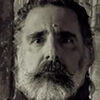Lets have a discussion about White Balance
Aug 11, 2019 07:52:57 #
I've enjoyed reading all of these post so far. And as a physics teacher, I can easily present a scientific definition. But, as a photographer...and human...I like the suggestion that it should be what we find visually appealing.
For anyone not shooting RAW, keep in mind that adjusting white balance is built right into RAW management, in both Photoshop and Affinity. (There is, I believe, an indirect way to adjust white balance for .jpg as well.)
For anyone not shooting RAW, keep in mind that adjusting white balance is built right into RAW management, in both Photoshop and Affinity. (There is, I believe, an indirect way to adjust white balance for .jpg as well.)
Aug 11, 2019 08:26:43 #
Aug 11, 2019 08:36:33 #
"My answer: It depends on the subject, theme and artistic intent."
You said it all. No need for a discussion.
You said it all. No need for a discussion.
Aug 11, 2019 08:36:54 #
I use auto WB when I shoot raw (which is all the time*). It generally gets me pretty close, but shooting raw allows me to make adjustments after the fact.
* I shoot jpg when I'm taking a shot of a featureless white wall to look for sensor dust since I don't see any need to adjust white balance for temporary shots.
* I shoot jpg when I'm taking a shot of a featureless white wall to look for sensor dust since I don't see any need to adjust white balance for temporary shots.
Aug 11, 2019 08:42:10 #
elliott937 wrote:
For anyone not shooting RAW, keep in mind that adjusting white balance is built right into RAW management, in both Photoshop and Affinity. (There is, I believe, an indirect way to adjust white balance for .jpg as well.)
For anyone not shooting RAW, keep in mind that adjusting white balance is built right into RAW management, in both Photoshop and Affinity. (There is, I believe, an indirect way to adjust white balance for .jpg as well.)
If your on a Mac you can use a version of Adobe camera raw to process jpgs. Open bridge and in that window select the image (jpg) and hit command r and it will open and give you adjustment tools. Much of what camera raw does. But all will be 8 bit.
Aug 11, 2019 09:02:13 #
I venture to say the correct WB depends on your intention to flatter the subject to suit your purpose.
For example, if you wish to render skin tones accurately, to reflect their true color, then you will pay close attention to WB as a foundation for this rendering.
Digital cameras offer a variety of WB settings including Auto WB to allow coming close to true coloration of an image.
BTW: Your question opens a big subject in photography in the digital age. Experts write tomes on color theory.
At a minimum, you will want to understand color contrast and complementary colors. Your photography can improve with this understanding in mind.
BTW: Nobody ever said that learning photography is easy.
For example, if you wish to render skin tones accurately, to reflect their true color, then you will pay close attention to WB as a foundation for this rendering.
Digital cameras offer a variety of WB settings including Auto WB to allow coming close to true coloration of an image.
BTW: Your question opens a big subject in photography in the digital age. Experts write tomes on color theory.
At a minimum, you will want to understand color contrast and complementary colors. Your photography can improve with this understanding in mind.
BTW: Nobody ever said that learning photography is easy.
JD750 wrote:
What is the correct white balance?
My answer: It depends on the subject, theme and artistic intent.
My answer: It depends on the subject, theme and artistic intent.
Aug 11, 2019 09:33:01 #
I have a good friend and magazine photographer who never corrected for WB in film days by using filters because he said whatever the color of light, he wanted it to stay that way. As far as realism I guess he's right. I do whatever adjustments look right to me. Shoot a person under a tree, and the blue from the sky and green from leaves can leave an unpleasant color cast on skin tones. It's pretty much subjective and no real right/wrong. AWB tends to neutralize any dominant colors shifting to the opposite color. A bright yellow becomes more blue, exc. Anything other than AWB just sets the camera for a certain color of light. AWB usually gets close enough to correct in post processing.
Aug 11, 2019 09:59:01 #
anotherview wrote:
....
....
BTW: Nobody ever said that learning photography is easy.
....
....
BTW: Nobody ever said that learning photography is easy.
But so many people seem to make it yet more difficult than it needs to be.
Aug 11, 2019 09:59:41 #
rodpark2 wrote:
I have a good friend and magazine photographer who... (show quote)
I like your comment!

Aug 11, 2019 10:02:51 #
junglejim1949 wrote:
I looked up Color-Checker Passport and Grey Card. One reviewer said they were a waste of time if shooting jpeg. What is the reasoning for this statement and is it true?
The color-checker passport is intended for post processing color balance. JPEG files don't have much latitude for post processing color correction. Not necessarily a waste of time, but you need to get close in camera when shooting JPEG.
A gray card is useful when shooting JPEG if you use it to set a custom white balance in camera. If you just take a picture of it for post processing color correction, then it has the same limitation as the color-checker passport.
If you plan on reviewing your images in camera, it is useful to get the white balance close to your intended product. AWB or custom settings can do that if the lighting is not too harsh.
Aug 11, 2019 10:10:24 #
Perhaps you guys can answer a question for me. When I was using Photoshop, I was able to use my gray card when photographing art work for my best friend. In Photoshop, I could click the gray with a tool, and it will tell me what color temp I should be using.
I have not yet found that tool in Affinity. Have any of you found that tool in Affinity?
I have not yet found that tool in Affinity. Have any of you found that tool in Affinity?
Aug 11, 2019 10:12:47 #
junglejim1949 wrote:
I looked up Color-Checker Passport and Grey Card. One reviewer said they were a waste of time if shooting jpeg. What is the reasoning for this statement and is it true?
The reason is that with jpg it is not possible to manipulate the RGB channels independently, as with raw. Basically you simply put global color casts over the chroma values, so that correcting one color often throws other color values off.
Aug 11, 2019 10:25:48 #
Ysarex
Loc: St. Louis
junglejim1949 wrote:
I looked up Color-Checker Passport and Grey Card. One reviewer said they were a waste of time if shooting jpeg. What is the reasoning for this statement and is it true?
It may be the reviewer was considering practicality. The options when shooting JPEG are:
a) use auto-WB -- generally close but rarely correct and often a major fail.
b) use a camera pre-set which has the advantage of consistency but lacks accuracy, especially in the non-daylight settings.
c) use direct temp/tint values (not all cameras) but we typically have no way of knowing what values to set with a color temp meter (not practical).
d) use a custom WB set on site for the condition at hand.
Option d) is the best option if you want the most accurate result but how that's set varies from one camera to another and often requires a target that is larger than the passport which is a practical concern.
What you can't do as John noted is shoot the passport as a target for correction later as is commonly done when working raw.
So to set a custom WB in the field shooting JPEG I use a carry a piece of white Styrofoam cut from the bottom of a food tray and large enough to function as a camera WB target.
Joe
Aug 11, 2019 10:51:26 #
Ysarex
Loc: St. Louis
elliott937 wrote:
Perhaps you guys can answer a question for me. When I was using Photoshop, I was able to use my gray card when photographing art work for my best friend. In Photoshop, I could click the gray with a tool, and it will tell me what color temp I should be using.
I have not yet found that tool in Affinity. Have any of you found that tool in Affinity?
I have not yet found that tool in Affinity. Have any of you found that tool in Affinity?
To do what you describe with Photoshop you had to be processing a raw file. Affinity when processing a raw file will do the same. Under the Basic panel in the Develop Persona is a White Balance option and on the toolbar is an icon of a color wheel with a diagonal line through it -- that's the point selection tool. Use of that tool on a neutral target will white balance the image and deliver temp/tint values to the White Balance control in the Basic panel.
As already noted in previous posts in this thread that same process applied to a raw file will not produce comparable results if attempted on an RGB (JPEG/TIFF/etc.) image. Nonetheless AP does provide an Adjustment layer in the Photo Persona labeled White Balance which will appear to do the same thing as the raw process counterpart; only it won't. You can also take an RGB image into the Develop Persona and use the raw process white balance tool which in this case will work much like the Photo Persona White Balance Adjustment Layer.
Joe
Aug 11, 2019 10:53:18 #
If the picture looks good, it is good.
Who would set the 'correct' white balance if it spoilt the image?
Who would set the 'correct' white balance if it spoilt the image?
If you want to reply, then register here. Registration is free and your account is created instantly, so you can post right away.







